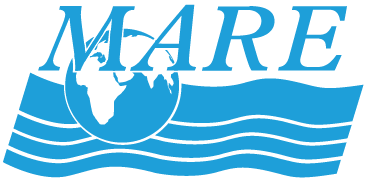Ocean Sciences Curriculum Sequence for Grades 6–8
Climate change is arguably the defining environmental issue of our generation. It is thus increasingly necessary for every member of the global community to understand the basic underlying science of Earth’s climate system and how it is changing in order to make informed, evidence-based decisions about how we will respond individually and as a society.
Curriculum Overview
Unit 1: How do the Ocean and Atmosphere Interact?
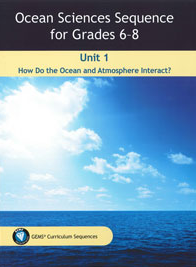
The ocean and atmosphere are closely interconnected through major Earth systems such as ocean and air currents, climate and weather patterns, the water cycle, and the flow and exchange of heat energy around the planet. In this unit, students learn about these connections through the lens of what sets water and air currents in motion, and how what happens in the ocean affects the atmosphere and vice versa. Students have many opportunities to delve into density—both as an observable phenomenon and on the molecular level.
Students come to an understanding of how density relates to movement of water, air, and heat on Earth. Thermal expansion and the concept that water is a heat reservoir are also explored in relation to the ocean-atmosphere system.
Unit 2: How Does Carbon Flow Through the Ocean, Land, and Atmosphere?
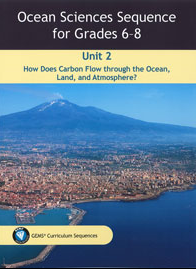
An understanding of how carbon flows between carbon reservoirs in Earth’s systems is crucial to understanding climate change, yet unfortunately, is often lacking among those debating this important issue. In this unit, students learn about how carbon flows from animals into the atmosphere through respiration, from the atmosphere into plants through photosynthesis, from the atmosphere into the ocean through absorption, into fossil fuels and sediments through decay, and from fossil fuels into the atmosphere through combustion. They learn that the flow of carbon into the atmosphere has been increasing in recent decades through the burning of fossil fuels, causing an imbalance in the carbon cycle. They also learn how this increase of carbon in the atmosphere has led to an increase of carbon dioxide in oceans, causing ocean acidification, and affecting ocean life.
Unit 3: What Are the Causes and Effects of Climate Change?
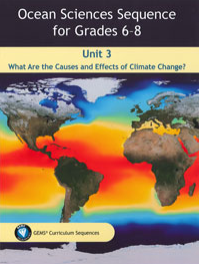
In this unit students explore the causes and effects of climate change as well as possible solutions. Through investigations of topics such as the greenhouse effect, melting glaciers and sea ice, sea level rise, human contributions to rising atmospheric CO2 levels, effects on organisms, and ocean-atmosphere connections, students gain an understanding of the underlying causes of climate change and how pervasive its effects are on the Earth system as a whole. In the last few sessions students revisit the human contributions to climate change and the carbon cycle they learned about in Unit 2 in order to brainstorm, learn about, and communicate with others about personal, local, and global solutions and adaptations to climate change.
Want to see a sample of this curriculum?
In the sample lesson, Session 2.7 (PDF, 20 MB) Investigating Combustion and the Carbon Cycle, students learn that carbon moves between reservoirs, but the total amount of carbon on Earth doesn’t change; and, human industry moves carbon out of fossil fuel and limestone reservoirs and into the atmosphere.
Curriculum Resources
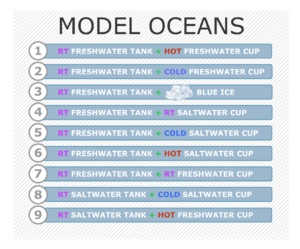
The Ocean Sciences Sequence for Grades 6–8 Resources page contains links to videos, computer simulations, and lists of other recommended materials that support and supplement this curriculum.
Curriculum Assessment System: Includes in depth description, purpose, and curriculum design.
Alignments with NGSS
Find out how the curriculum aligns with the Next Generation Science Standards. OSS NGSS Alignments Download standards. (PDF, 1.87 MB)

